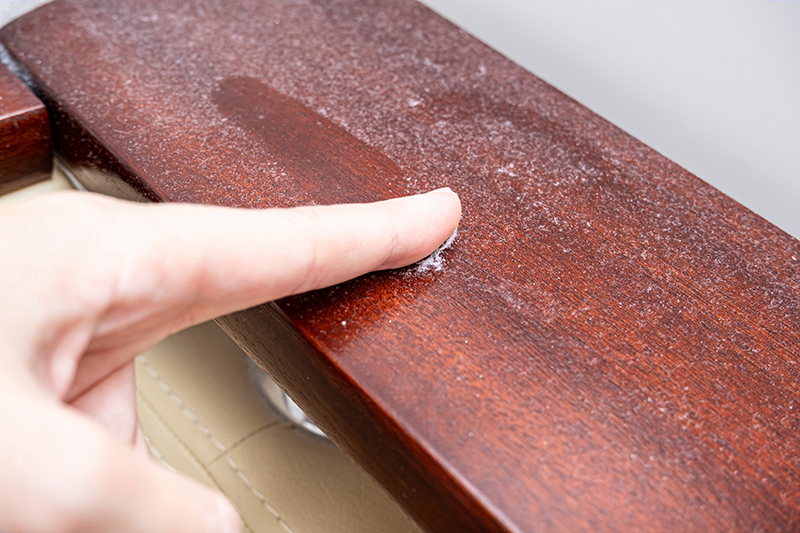Why Is My Home So Dusty This Winter?
January 12th, 2024 by eshoop

As the winter season arrives, many homeowners notice more dust in their homes. Dust accumulation can be frustrating and affect indoor air quality. To understand why your home may be dustier during winter and how to combat it, we explore what causes dust. We look at why dust is more prevalent in the wintertime. We also share practical tips to protect your home from dust this winter.
Why Dust Occurs in a Home
Dust is a mixture of various particles that settle on surfaces throughout our homes. It consists of dead skin cells, pet dander, pollen, fibers, dirt, and other particles. Particles from the outdoors, such as soil, pollen, and pollution, can cause dust. They enter your home through open windows, doors, and ventilation systems. Activities like walking, moving furniture, or cleaning can release particles into the air. This can further contribute to dust buildup. Pet dander and fur shed by our furry friends can also contribute to household dust. Fabrics, carpets, upholstery, and even electronics can release small particles. These can all add to the dust in your home.
Why Dust Is More Prevalent in the Wintertime
Several factors contribute to increased dust levels during the winter months. During winter, we tend to keep our windows and doors closed to conserve energy and warmth. Limited ventilation reduces the circulation of fresh air, allowing dust particles to accumulate. Heating systems can blow dust and other particles into the air when they first turn on. This can redistribute settled dust throughout your home. Winter air tends to be drier due to lower humidity levels. Dry air can cause static electricity. This attracts dust particles and makes them more noticeable. With colder temperatures, we spend more time indoors. This contributes to more indoor activity and more particles into the air.
How to Protect Your Home from Dust This Winter
While it’s challenging to get rid of dust completely, you can take steps to reduce its impact.
- Regular Cleaning. Maintain a consistent cleaning routine. Be sure to dust surfaces, vacuum carpets and upholstery, and sweep floors. Use microfiber cloths or electrostatic dusters that attract and trap dust.
- HVAC Maintenance. Schedule regular maintenance for your heating system to ensure it works as it should. Replace filters often to prevent dust buildup and improve indoor air quality.
- Control Humidity. Use a humidifier to add moisture to the air and reduce static electricity. Optimal humidity levels can help reduce the attraction and accumulation of dust particles.
- Limit Indoor Pollution. Avoid smoking indoors and reduce the use of products that release VOCs. These include certain cleaning solutions and air fresheners.
- Entrance Mats. Place doormats both inside and outside your home. This can help to capture dirt and dust from shoes before they enter your living space.
- Air Purification. Consider using an air purifier with a HEPA filter. They can capture and remove airborne particles, including dust, from your indoor environment.
- Pet Grooming. Groom your pets often to limit shedding and dander. Vacuum pet bedding and clean surfaces they often come into contact with.
Contact Us
Excessive dust in your home during winter can be bothersome. But taking preventive measures can help create a cleaner indoor environment. Several factors can contribute to dust accumulation. By implementing the strategies mentioned above, you can limit dust this winter. If you need help with your home’s dust and indoor air quality, contact us. Enjoy a cleaner and more comfortable living space throughout the season.

